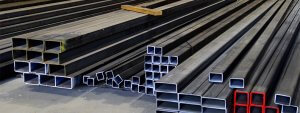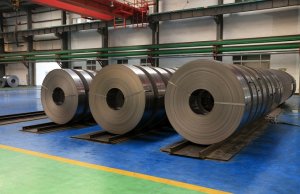What Will the Tariffs on Steel and Aluminum Cost Us?
The news is saturated, as of late, with the tariffs on steel and aluminum imports imposed by the Trump administration. Rightly, many are concerned with what this means and the possible harm it will cause. Will the imposed tariffs help local producers of these metals, or will it only hurt U.S. companies, resulting in increased costs and possible job losses?
 Workers from many different industries and companies that these tariffs can affect have penned letters to the Trump administration, as well as various trade associations. Precision Plus President Mike Reader feels that while creating a level playing field is a good thing, these tariffs are not the solution. Instead of taking the “surgical approach” that had originally been planned, this move attacks all foreign suppliers and can likely trigger a trade war with some of our closest allies.
Workers from many different industries and companies that these tariffs can affect have penned letters to the Trump administration, as well as various trade associations. Precision Plus President Mike Reader feels that while creating a level playing field is a good thing, these tariffs are not the solution. Instead of taking the “surgical approach” that had originally been planned, this move attacks all foreign suppliers and can likely trigger a trade war with some of our closest allies.
Below is a letter that Mike Reader had written to one of our trade association’s members back in early March following the association’s public support of the proposed tariffs.
Like everything, what you see on the surface has much more to it below the water line. There are many angles to explore on this topic, and please understand, I am all for national security and the need to produce all those things that keep us independent, without the need from other countries. However, this potential, unilateral action about to be taken by the president, if implemented poorly puts many more jobs at risk than it protects. This problem, in my opinion has been decades in the making, and again in my opinion, the result of our own domestic mills greed and ignorance, where they felt no need to innovate or focus on value. In the matter of a few decades, the world passed them and their highly-compensated union labor by. Management owns much of the blame, the unions surely did not help with their elevated cost structure and restrictive rules, and our regulatory/environmental policies added substantial costs where the majority of the (new) world had little (e.g. non-Western European mills).
Fast forward to today, much of what they are fighting over is flat roll materials, as long bar products are but a small fraction of the tonnage. Let’s be clear – our own situation, or at least mine, is focused on bar products. U.S. stainless mills are limited to essentially Carpenter (and affiliates) and North American Stainless (aka NAS). Anyone that has dealt with Carpenter knows all too well that while their product is good, the pricing is crazy high and their customer service model is horrible. NAS, while far less expensive, leaves us with quality/consistency challenges which drive us to Europe to source higher quality product than what is available from either source, at a competitive price. Sorry to the Carpenter and NAS executives on this list serve, but you have an honest opinion from a consumer in the marketplace, and no charge for it.
We made the same argument back in the early 2000’s when Section 201 was being debated. My point then was that there was not any domestic company willing to produce the quality of product, at any price, that could compete with the then French-owned Ugine Stainless and Alloys (now doing business as S+B). The same applies to the aluminum market where the big boys of Alcoa and Kaiser refuse to step up their quality standards into the 21st century, believing that 1950’s standards for size consistency, straightness, and roundness are still relevant today. Bottom line, they are not interested in producing high quality bar stock domestically, only pushing tonnage numbers. And while it may work in a “battleship” era 2’ Acme-Gridley, it does NOT work in a high precision Swiss type lathe.
If the president wishes to save the approximate 10,000 steel and aluminum jobs, he may wind up pushing our very price conscious customers to source the finished parts, or assemblies overseas, where they can currently be imported duty-free. And how many jobs are we risking in the conversion industries like ours? I do not have the exact facts on this, but I would bet it is far higher than the steel/aluminum industry jobs we are talking about, probably by a factor of 20 or more.
Yes, let’s find a meaningful way to rebuild our domestic steel and aluminum industries. Just remember, we need to do it with great care and understanding of all the variables that led us here, and the consequences of any actions.
And why are we not talking about the processing of rare earth magnets which the Chinese now dominate as they drove the rest of the world out of this industry through a long-term strategy undercut the costs of manufacture? This is an equally important topic, and one that has fallen off the radar. Look up all the things of national security that do not happen without these high-powered magnets. To learn more about this issue, visit http://sonorannews.com/2018/06/03/congress-helped-create-domestic-rare-earth-minerals-shortage/
 Steel and aluminum production jobs make up just part of the U.S. economy, but manufacturers and end users are also a huge part of the picture. These tariffs and possible retaliation (which has already started happening) from upset trading partners may end up causing more harm than good.
Steel and aluminum production jobs make up just part of the U.S. economy, but manufacturers and end users are also a huge part of the picture. These tariffs and possible retaliation (which has already started happening) from upset trading partners may end up causing more harm than good.








